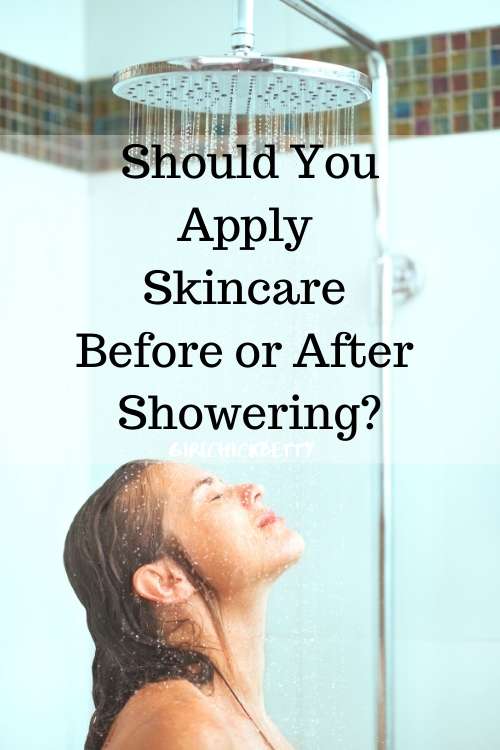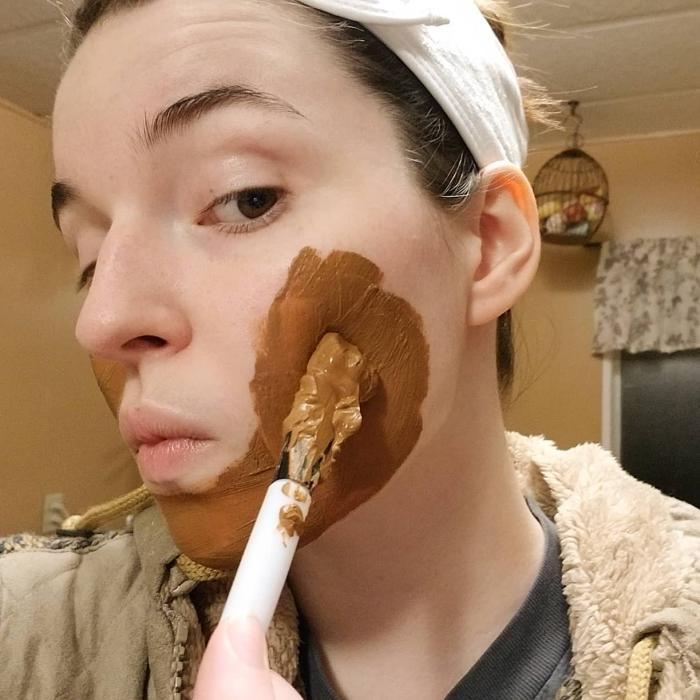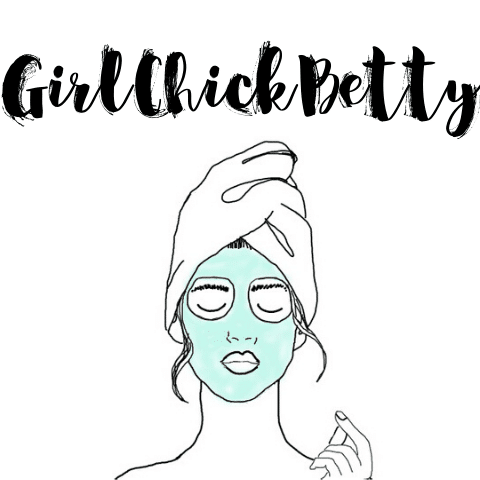I’m definitely someone who loves squeezing as much multitasking as humanly possible into my morning routine. It’s not strange for my toothbrush and facial cleanser to both end up in the shower after a rushed morning routine.
I had to stop myself and think, is it better to apply skincare before or after showering? Or on the other hand, can you get away with actually doing your skincare inside the shower?
Yes, you can do almost all of your skincare routine in the shower! But there are some skincare steps that should be left until after you have dried off. Let’s break it down step by step so you can save as much time as possible during your daily skin routine.

Should You Apply Skincare Before or After Showering?
You can use almost any rinse-off skincare product before or during your shower. I personally use all my rinse off steps during my shower while I wait for my conditioner and shampoo to work their magic. The one exception to this is with chemical peels and chemical exfoliants that need to be rinsed off.
Chemical exfoliants like glycolic or lactic acid are rinsed off with cold water to neutralize the formula and stop the exfoliating process. When used carefully, these products will not cause irritation to normal skin types. But if you were to rinse them off using hot water during a steamy shower it could seriously irritate your skin.
Here’s a quick cheat sheet:
You can use these products in the shower:
- Mud masks
- Rinse off face masks
- Cleansers and cleansing balms (here’s my personal favorite cleanser)
But, do NOT use these skincare products inside the shower:
- Chemical exfoliants/peels
- Sheet masks + overnight masks
- Serum, essence, ampoules
- Moisturizer/eye cream
Don’t Land Yourself In Hot Water
A long scalding shower may be tempting on a chilly day but extremely hot water can actually dry out your skin! This scientific study monitored patients’ skin after cleansing with different temperatures of water and proved that skin can easily be damaged when washed with overly hot water. It strips away the healthy fats and oils in your skin barrier and actually causes your skin to lose hydration through Trans Epidermal Water Loss (TEWL).
If you take intensely hot showers it would be best to save the skincare for afterward. These high temps can also affect the rest of your body, it’s not just your face that can be damaged. It’s especially tempting to relax with a steamy shower during the dry winter months but this is when we need to really watch out!

Lengthy hot showers can worsen eczema, psoriasis, acne, rosacea, and even cause otherwise healthy skin to become irritated and dehydrated. But hey, your water/electric bills will also be glad if you turn down the temperature and shorten those 45-minute long shower sessions!
Should You Cleanse During or After Showering?
Your cleansing step can easily be done in the shower. Washing your face in the shower is actually a great opportunity to make sure your hairline and jawline get thoroughly cleansed as it can be tough to get those areas cleansed without soaking yourself at the sink.
Save your cleanser until the very tail end of your shower as this will ensure that any residue from your hair products is also removed from your skin. Products like conditioner or other waxy formulas can drip onto your face laving a thin residue on the skin which causes clogged pores and other forms of breakouts. If you have very long hair and struggle with back acne you might actually be able to trace it back to your conditioner!
Removing Makeup In The Shower
If you have a double cleansing routine feel free to take it into the shower with you! But be aware that oil-based products break down quickly in hot water so keep an eye on those temps. As long as you face away from the water stream you can easily use cleansing balms to tackle makeup removal in your shower.
You can then follow up your oil-based cleanser/balm with your normal cleanser while still in the shower. Just be sure to save that second cleanser until after you’ve used all other beauty products. This will prevent any unwanted shampoo/body wash residues from getting left behind onto your face or neck. And this goes without saying, but make sure your hands are thoroughly rinsed from any previous soaps before you move onto washing your face.
Is It OK To Store Skincare In The Shower?
Many skincare products contain active ingredients like Vitamin C or chemical exfoliants like AHA/BHAS. These active ingredients are easily damaged by heat and your steamy shower stall is not a safe storage location.
“Anything containing active ingredients will degrade under the bright lights and warm, damp conditions in the shower. Not only does that mean that your AHAs and BHAs won’t do their job as effectively, but it also means that bacteria within the product can multiply and cause breakouts and potential infection.”
Dr. Justine Hextall Consultant Dermatologist
Basic skincare like simple facial cleansers can be left in the shower but make sure that you’re keeping their lids shut tight after each use. Even if there are no active ingredients the warm environment of the shower can create a smorgasbord for bacteria so it’s very important to keep things sealed tight.
If you’re having trouble figuring out how to store all of your skincare check out my guide on How to Organize Your Skincare Stash here.
Face Masks In The Shower or After?
Mud masks can be a major pain in the neck to rinse off over a sink without making a huge mess! I recommend applying the mask while your shower is heating up. This will give the masks a few minutes to absorb into the skin and you can get your other shower products together while waiting as well. You can give it even more time to work its magic by focusing on other areas of your body and keeping your face out of the water stream.

Exfoliating or moisturizing face masks can also be rinsed off in the shower, just be sure that you’re not accidentally rinsing them off too early. If you have a spendier skincare product that you’re worried about prematurely going down the drain you’d be better off waiting until after the shower. Alternatively, you would just need to make sure that you gave the mask ample time to work before stepping in the shower.
What about sheet masks or sleeping masks?
Sheet masks are designed as leave-on products and any leftover essence from the cloth is massaged into the skin after you remove the mask. Sleeping masks are only meant to be rinsed off in the morning after having many hours to nourish the skin. These kinds of treatments should always be applied after showering, otherwise, you will lose out on most if not all of their nourishing benefits!
How to Finish Your Skincare Routine After Showering
There is a very short window between getting out of the shower while your skin is still moist and steamed and when it starts to dry out and start losing hydration. It’s important to quickly apply serum and moisturizer before your skin has a chance to completely dry.
Serums and moisturizers are more effectively absorbed when applied to damp skin and it will also help to seal in extra moisture. Applying these products should be the very first thing you do after getting out, your hair routine can wait! ? Ideally, you should have your moisturizer on within 3 minutes of getting out of the shower.
Finally, toners, essences, ampoules, and serums should all be applied after showering because they are meant to remain on the skin and do not require a rinse after application.
Recent Posts
There are two new sunscreens on the block and the lovely folks over at Kinfield gifted some tubes for me to to test out so I can share a skincare deep dive with y'all! This post contains affiliate...
Trying to find a sunscreen formulated without glycerin is no easy task! I've researched hundreds of sunscreen formulas while writing for this blog and it's shocking how extremely few glycerin-free...
